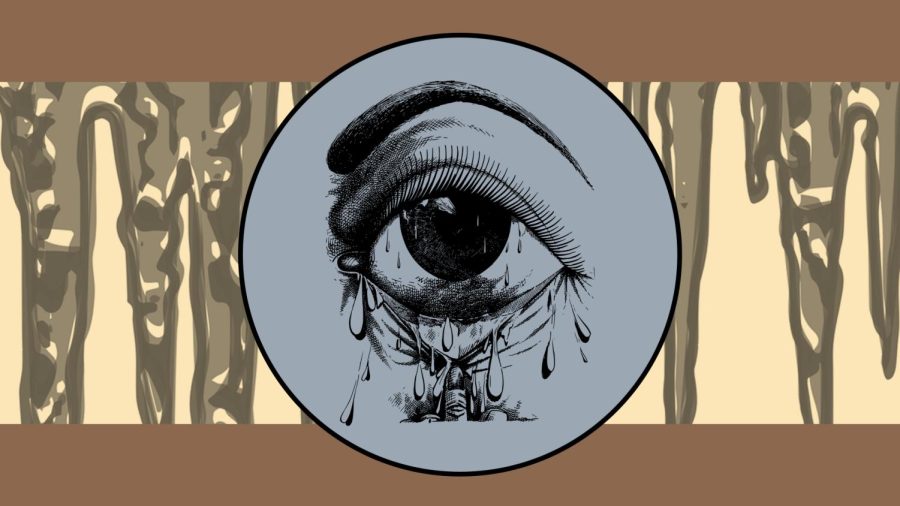Album review: ‘Soundtracks For The Blind’ Swans, 1996
Michael Gira’s experimental rock project produced one of the most avant-garde records to date.
The cover brings as much feeling as the album itself
February 23, 2023
Score: 9.1/10
Swans have always been one of those bands to dive into areas of rock that no band has explored before. The band’s debut “Filth” in 1983 marked a period of the band where Michael Gira constantly screamed into a microphone to the sounds of banging trash cans and chainsaws. After a decade, the band explored a softer sound in projects like “Love of Life” and “The Great Annihilator,” all while still containing *maintaining -ke an eerie aroma.
However, the band’s 1996 project “Soundtracks for the Blind” dove headfirst into the muddy waters of experimental music. The album is over two hours long and is divided into two discs: silver and copper. The project is compiled of many recordings spanning the entirety of the band’s existence, with some recordings dating as far back as 1981.
I don’t know where to start when talking about this album for a multitude of reasons. I cannot accurately tie this record into any other genres except experimental and drone. The overall sound of the album flip-flops constantly between tracks. Yet, despite the uneasy flow, each track sounds connected. Each track has this eerie aroma over it that makes the listener feel uneasy. There are three subcategories I can accurately categorize the tracks; the post-rock tracks, the drone tracks, and then the tracks straight from hell.
The first category is more of the traditional type of music Swans would make in previous albums. Some tracks on “Soundtracks for the Blind” utilize traditional guitars, synths, and feedback loops. These songs are also the only ones on the album where lead member Gira sings.
The best song from this group by far is “Helpless Child,” a fifteen-minute-long track that explores child abuse from the perspective of the child. The song begins with an eerie guitar loop before diving into an acoustic sound. Once Gira stops singing, the song spends the next couple of minutes building up a crescendo of multiple instruments. This ending to the track is the most rewarding part of the album. It feels like the moment when the child escapes and recovers from the abuse his mother put him through. The track is oddly melancholic, as other tracks Gira drops in on like “The Sound” and “Empathy” are darker and more twisted.
The second category consists of drone tracks. These are usually made up of nothing but the ambiance, scattered across a multitude of emotions. Most of these act as transitions into other tracks. The very first track, “Red Velvet Corridor,” acts as a portal that launches the listener down into the caves of purgatory. Other tracks like “Surrogate 2” and “Surrogate Drone” are similar.
The main category of tracks consists of what I can only describe as coming directly from hell. The record has moments on some tracks that sound straight out of a deep-web audio tape. “I Was A Prisoner In Your Skull” sounds like Satan laughing as he watches innocent angels scream in agony. The fact that the track ends with a sample from a wiretapped recording of a criminal does not help it become any easier to listen to.
The track “How They Suffer” features a sample of Gira’s father explaining his blindness and band member Jarboe’s mother suffering from dementia. The track puts the listener into the feet of the deteriorating physical health of the elderly.
The track “Her Mouth Is Filled With Honey” sounds like it comes from a horror movie scene where a colony of bees swarms every orifice of a female child. The beginning of “YRP” sounds like a soundbite from a beheading video of Stewie Griffin from Family Guy.
By far the most uneasy I felt while listening to the album was in the middle of “The Beautiful Days.” There is this looming post-apocalyptic drone that plays behind a looped sample of a young Jarboe singing about a beautiful day. The juxtaposition of the post-apocalyptic drone and a happy child singing sounds like the soundtrack to nuclear armageddon.
Overall, “Soundtracks for the Blind” is a wild experience that is worth the two-hour run time. The album has nooks and crannies that can elicit a wide variety of emotions. The album is a unique experience, unlike any other record I listened to.











